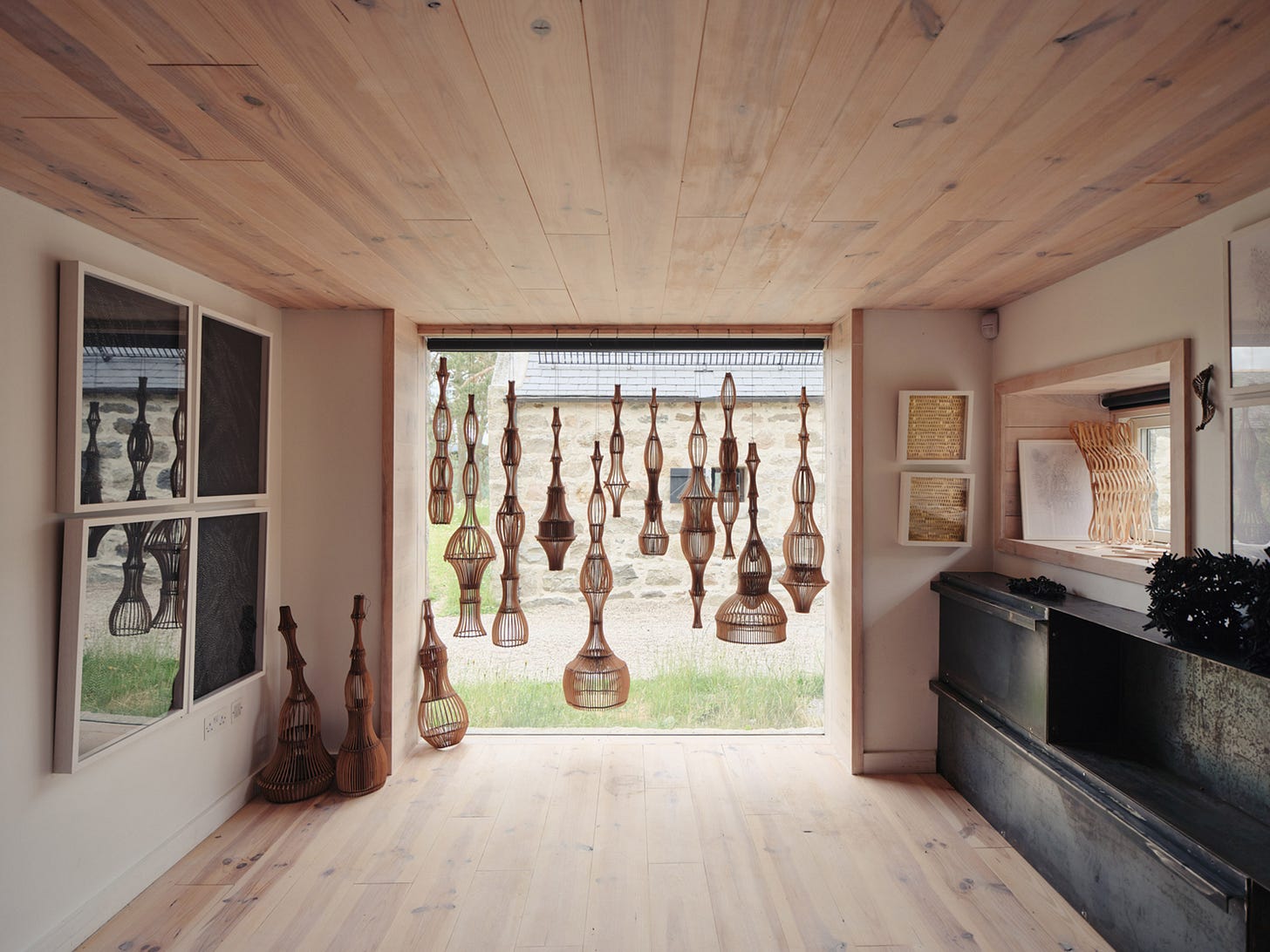A 19th-century farmstead made new again
A decade-long undertaking transforms a 170-year old Scottish farmstead
Some of my favorite projects I feature on Linear are adaptive reuse – there’s something about taking something old and making it new again that feels particularly imaginative. You can’t start with a blank slate when you’re building around 19th-century agricultural buildings. And the heritage, along with the architecture itself, must be preserved.
Ardoch House, one of Moxon Architects’s latest projects in the Scottish Highlands, does just that.
Built almost 170 years ago, a decade-long undertaking transformed a historic Aberdeenshire farmstead into a modern residence in Cairngorms National Park.
Ardoch House is composed of three main parts: the guesthouse, the glasshouse, and an artist’s studio.
The Guesthouse
While I admit it’s a bit on the “beige” side compared to what I usually curate, the attention towards preserving the property’s history can’t go unrecognized.
The original, partially-collapsed 19th-century cattle shed was rebuilt to preserve its detail and form — the roof was rebuilt with “newly rationalized pyramidal geometry,” and its walls were lined with clay plaster. (I’ll admit I’m a sucker for texture.)
There’s a rural aesthetic here that’s really hard to get right – it’s really easy for rustic design to become overly traditional, almost Yellowstone-esque – but Moxon toes this line really well by incorporating elements of traditional farmstead design with more modern, Scandinavian sensibilities.
Minimal meets local with ceramic-clad walls and Caithness slabs in the bathroom, a stone native to the highlands of Scotland, which comprise the floor, shelves, and countertop.
The Glasshouse
Across the property, a collapsed farm store and sheep pen was meticulously readapted to be a glasshouse, designed in collaboration with the artist/architect owners, joiners Jacek and Waldi Zapała, and steelwork fabricator Craig Monteith.
I’ve managed to kill too many succulents to be a plant guy, but I’d consider taking up a hobby here if it meant I got a bed in the guesthouse.
There’s not a ton of visual design stuff happening here, but the engineering is impressive enough on its own to be worth highlighting.
Water for irrigation of plants is collected from the roof and stored in an internal tank which overflows to an external water butt carved from a windblown larch tree, and internal condensation is collected by a copper gutter and distributed into a bay tree planter. Ventilation is adjusted by large opening hatches along the top back edge of the building while supplemental heating can be provided by a wood-burning workshop stove. —Moxon Architects
The Artist’s Studio
Attached to the glasshouse is the final component of the project: the artist’s studio. Repurposed for artist Naomi Mcintosh, and formerly used to winter sheep, the granite building was converted to be a full-service studio, complete with a kitchen, wet room, and storage.
One of my design predictions for 2024 is more metal — these stairs make a great case for it. The juxtaposition between the oak-paneled stairs, the 19th-century granite, and the blackened steel finish really does it for me.
Architecture is meant to be enduring, but it’s also meant to be adaptive. “It is testament to the robustness and resilience of the historic buildings that this is a project characterised by retention and repair,” said Ben Addy, founding director of Moxon Architects.
“We developed the design and details to ensure that these once derelict buildings will survive for the next two hundred years to come.”
—
Name: Ardoch House
Location: Aberdeenshire, Scotland
Architect: Moxon Architects
Photographer: Simon Kennedy
Written & curated by: Justin Potts
—
Linear Magazine is for the Architecturally Curious: expertly-curated content across the social, digital, and physical realms.
Follow Linear on Twitter for more curated design and architecture.















"I’ve managed to kill too many succulents to be a plant guy"... I'm the girl version of you. Ha! Tbh, the blend of modern and rustic is almost irresistible. You get the best of both worlds while also preserving something special with heritage. I can see this look being more common in the future.